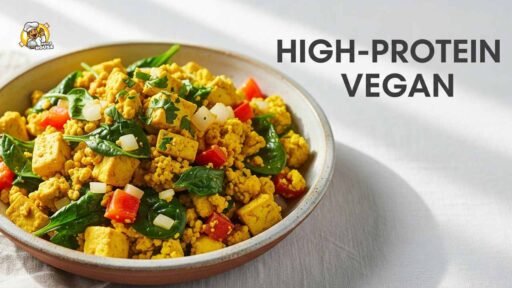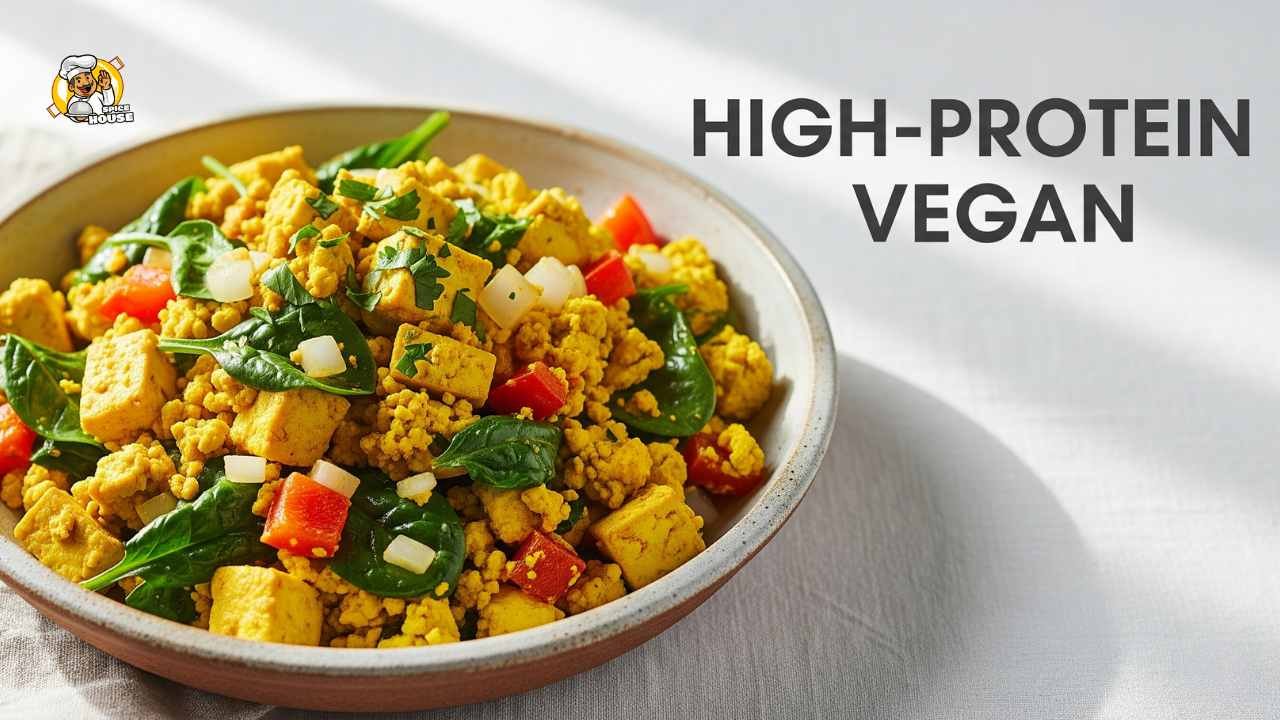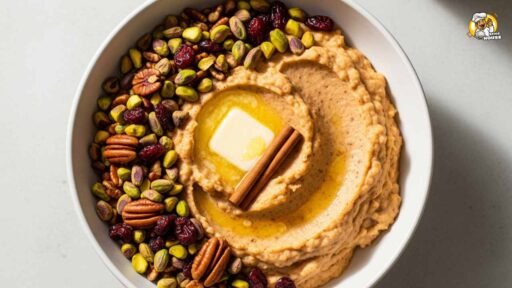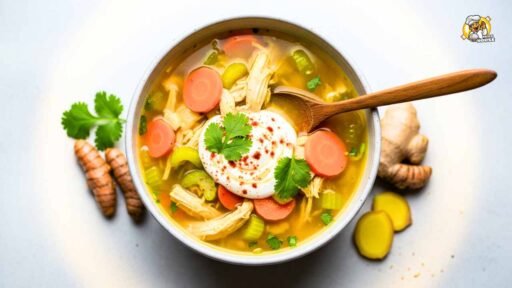Here’s the hard fact: U.S. plant-based foods sold about $8.1 billion at retail in 2023, even as growth cooled and meat alternatives took some bruises. But flavor never left the building. In fact, spice giant McCormick & Co. told investors that at-home cooking remains sticky post-pandemic, and seasoning is the flywheel. That brings us to breakfast—the last mass-market meal still up for grabs in plant-based. A bright, savory, turmeric tofu scramble sits right at the intersection of real nutrition and real habit. It’s fast, cheap, and flexible. And it turns out to be a case study in how flavor companies, tofu makers, and retailers hope to win your morning.
The trend has a wrinkle. Investor patience for splashy, low-margin “alt-anything” has thinned. Consumers are wary of ultra-processing. Employees in legacy food plants feel the pressure as portfolios shift. Still, high-protein, minimalist recipes—especially those built on whole foods like tofu and spices—are punching above their weight. The fight is simple: Who owns Tuesday at 8 a.m.? Flavor giants? Tofu brands with scale like Nasoya (Pulmuone)? Or the grocers that push private label? This smells like a land grab, and breakfast is the prize.
The Data:
-
According to the Good Food Institute and the Plant Based Foods Association, U.S. plant-based foods hit roughly $8.1 billion in retail sales in 2023, with plant-based milks now about 15% of all retail milk dollar sales. That’s a settled beachhead—and a hint that breakfast is winnable.
-
Grand View Research estimates the global turmeric market at around $3.3 billion in 2022, growing at a mid-single-digit CAGR through 2030. The spice aisle isn’t niche. It’s a scaled platform for breakfast flavor.
-
USDA FoodData Central lists firm tofu at roughly 8–10 grams of protein per 100 grams. A standard 14-ounce block nets about 35–45 grams of protein, depending on brand and water content. That’s real satisfaction for not much cost.
Turmeric Tofu Scramble: High-Protein Vegan (Step By Step Guides)
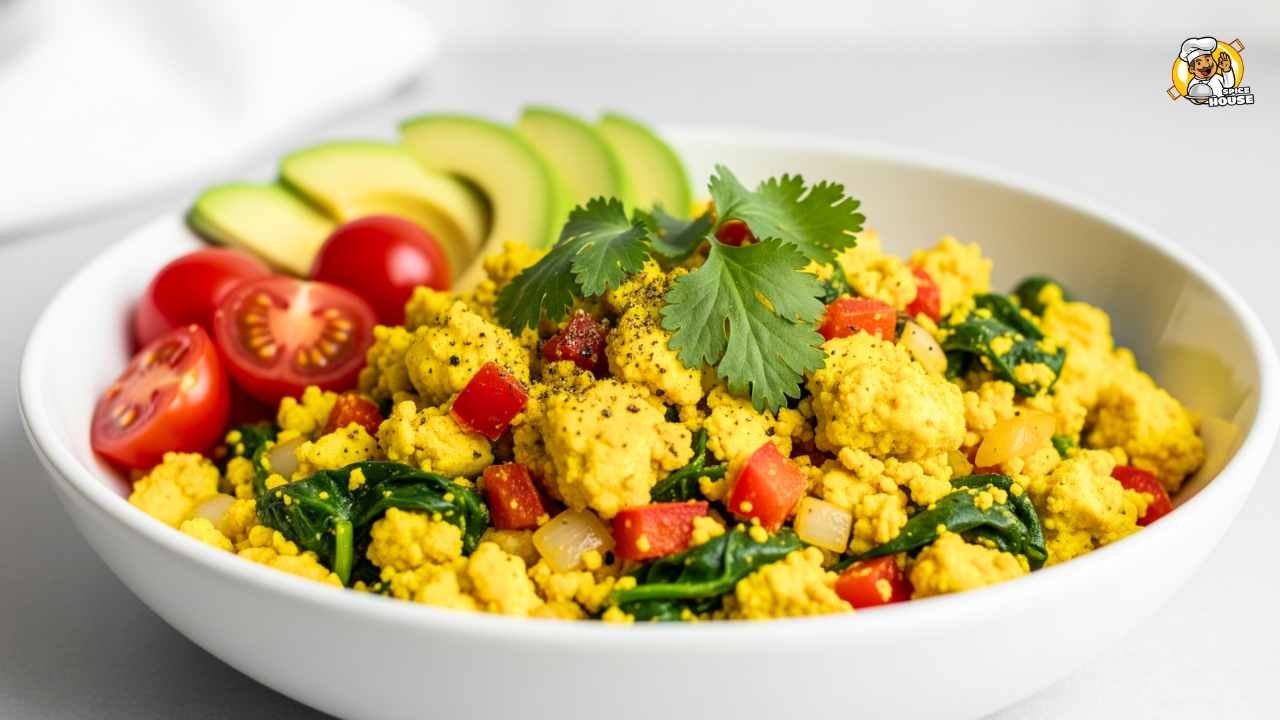
Step 1: Shop smart, prep faster, and set your flavor base
If you want breakfast to stick, simplify the front end. Buy extra-firm or firm tofu for the best texture. Grab a fresh turmeric blend (or ground turmeric), cumin, paprika, and black pepper. If you can find it, add kala namak, the sulfurous “black salt” that mimics eggy aroma. Stock onions, garlic, and a quick-cooking veg like baby spinach, mushrooms, or bell pepper. Have a fat that can handle medium-high heat (avocado oil or light olive oil) and a creamy finisher—dairy-free yogurt, cashew cream, or a splash of oat milk.
Core ingredients for 2 servings:
-
14 oz (396 g) extra-firm tofu, drained
-
1 small onion, diced
-
2 cloves garlic, minced
-
1 cup veg: sliced mushrooms, diced bell pepper, or a handful of spinach
-
1.5 tablespoons neutral oil
-
1.5 teaspoons ground turmeric
-
1 teaspoon ground cumin
-
0.5 teaspoon sweet or smoked paprika
-
0.25 teaspoon black pepper (freshly ground)
-
0.25–0.5 teaspoon kala namak (optional but clutch)
-
1–2 tablespoons nutritional yeast (umami, optional)
-
2–3 tablespoons water or oat milk
-
Sea salt to taste
-
Lemon wedge and chopped herbs (cilantro, chives) to finish
Why this setup works: you’re building a simple flavor stack that hits color, aroma, umami, and a hint of creaminess without buying 12 niche items. Cost stays low. Speed stays high. And the turmeric-black pepper pairing isn’t just tradition. Research shows piperine in black pepper can boost curcumin’s bioavailability by a big margin. You also create a base that tolerates swaps—frozen onions, pre-sliced mushrooms, or bagged greens when time is short.
Step 2: Press, crumble, and season the tofu before it hits the pan
Tofu texture is the deal breaker. Watery scramble tastes like a hotel buffet. You don’t need a 20-minute press, but get rid of surface moisture.
What to do:
-
Drain the block and wrap it in a clean kitchen towel. Press gently with your palms or set a skillet on top for 2–3 minutes while you prep the onion. The goal is to shed extra water, not squash it flat.
-
Crumble the tofu into a bowl using your fingers. Aim for a mix of pea- to grape-sized chunks. Irregularity mimics the curds in a classic scramble.
-
Pre-season the crumbles. Sprinkle 0.75 teaspoon turmeric, 0.5 teaspoon cumin, half the paprika, a pinch of salt, and a few grinds of black pepper over the tofu. Toss with your hands. Add 1 tablespoon of nutritional yeast if using. This step puts flavor inside the curds, not only on the surface.
-
Loosen with 1 tablespoon of water or oat milk if the mix looks dry. You want moisture to help spices stick and bloom later, not a paste.
Why it matters: Tofu doesn’t carry salt the way eggs do. Pre-seasoning and crumbling give you control over salinity and bite. It also speeds up cooking. You’ll get color development from turmeric faster, and the cumin will toast gently as the crumbles heat. Here’s the thing—if you dump unseasoned tofu into the pan, you end up chasing flavor for the next five minutes and overcooking the veg. This two-minute “mis en place” saves your morning.
Step 3: Bloom your spices and build the aromatic backbone
Turmeric is fat-soluble and blossoms in warm oil. So do cumin and paprika. If you want restaurant-level aroma in a weeknight kitchen, bloom the spices.
What to do:
-
Heat 1 tablespoon of oil in a wide nonstick or seasoned cast-iron skillet over medium heat. Add the diced onion with a pinch of salt. Cook 2–3 minutes until translucent and a little sweet. Keep it moving so it doesn’t brown too much.
-
Push the onions to the side. Add a half tablespoon more oil if the pan looks dry. Sprinkle in the remaining turmeric, cumin, and paprika, plus the minced garlic. Stir in the oil for 20–30 seconds. You’re perfuming the fat. If anything threatens to scorch, lower the heat and add a teaspoon of water.
-
Fold the onions and spices together. You’ll see a vivid golden hue and smell the warmth. That’s your backbone.
The trick: use enough oil to coat spices, but not so much that the scramble turns greasy. Spice quality matters more than you think. This is where a company like McCormick has an edge. They’ve spent years standardizing volatile oils, granulation, and color yield. You can taste it. Some boutique brands swing brighter, but consistency is king on a busy weekday. Add black pepper now, too; it wakes up with the heat.
Step 4: Add the tofu, manage moisture, and layer the veg
It’s time for the main event. You want steam plus sizzle—moist heat to warm through, plus enough dry heat to drive off excess water.
What to do:
-
Add the seasoned tofu crumbles to the skillet. Toss to coat in the aromatic oil. Spread in an even layer. Let it sit for 60–90 seconds. Don’t stir. This brief rest helps the bottom side pick up color and a tiny bit of texture.
-
Stir and cook 2–3 more minutes. If the pan looks dry or the spices tear, add 1–2 tablespoons of water or oat milk. The liquid brings everything together and gives a “soft curd” vibe. Keep the heat at medium; you’re not stir-frying.
-
Fold in your veg. Mushrooms or peppers go in first; cook 2 minutes. If using spinach, add it in the last 30–45 seconds so it just wilts. Taste and adjust salt.
-
Cut the heat. Sprinkle in kala namak if using. Start with 1/4 teaspoon and add more to taste. It’s potent. Finish with another grind of black pepper.
Texture is your KPI here. If it feels chalky, it needs a splash of liquid and 30 seconds more heat. If it feels watery, raise the heat and spread the scramble so steam escapes. Don’t chase a crust; tofu won’t set like eggs. Your job is tender, moist, and well-seasoned. Sources say a breakfast-forward spice lineup is coming from a big flavor house, but you don’t need it. You’ve just built it from pantry staples.
Step 5: Finish strong, serve smart, and scale for the week
The last 60 seconds lock in craveability and turn a good scramble into a repeat habit.
What to do:
-
Off heat, stir in the remaining nutritional yeast if you saved some. Squeeze a little lemon over the pan to lift the flavors. Taste. Need more salt? Add a pinch of sea salt or another sprinkle of kala namak.
-
Garnish with chopped herbs. Cilantro brightens turmeric. Chives or scallions add snap. A dollop of plant yogurt or tahini sauce offers cream.
-
Serve on toast, rolled into a warm tortilla, over quinoa, or beside sliced avocado. Hot sauce? Go for it. Turmeric plays well with smoky or vinegary heat.
Make-ahead and scaling:
-
Batch it: Cook a double portion on Sunday. Cool fast, then refrigerate in shallow containers for up to 4 days. Reheat with a splash of water in a skillet over medium heat. Add fresh greens at the end for pop.
-
Freeze crumbles: Seasoned, uncooked tofu crumbles freeze well. Spread on a sheet pan, freeze, then bag. Cook straight from frozen in a hot pan with a tablespoon of oil, adding veg once the steam dies down.
-
Protein math: Two servings deliver roughly 18–22 grams of protein each, depending on your tofu brand and portion size. Add a side of edamame or hemp seeds if you want to hit 25–30 grams.
Variations worth trying:
-
Masala scramble: Add 0.5 teaspoon garam masala and a pinch of chili powder, finish with tomatoes and cilantro.
-
Smoky diner style: Swap paprika for smoked paprika, fold in sautéed onions and potatoes, top with pickled jalapeños.
-
Green machine: Stir in chopped kale and peas, finish with basil and a drizzle of olive oil.
The result? A golden, savory, five-ingredient core system that cooks in 10–12 minutes and fits any morning. It’s priced right, and it tastes like something you didn’t make in a rush.
The People
“A former grocery category manager told me, ‘Breakfast is the last uncluttered real estate in plant-based. If spices and tofu can solve for taste and protein without the processing baggage, retailers will build endcaps around it.’” An executive chef at a fast-casual concept put it more bluntly: “We previewed a turmeric tofu breakfast taco and it outsold our veggie egg wrap on test days. Guests didn’t care that it was tofu; they cared that it was hot, bright, and filling.”
Inside the spice world, R&D teams focus on repeatability. A McCormick product developer described it this way at a trade panel: “Home cooks want a one-shake path to craveable. We engineer blends to bloom at 275–300°F, not 400°F, because most people cook breakfast at medium heat.” That one detail is why a turmeric-forward blend can taste round instead of harsh in your skillet at 8 a.m. A registered dietitian I spoke with added a practical note: “Aim for 20-plus grams of protein at breakfast and include color. Turmeric + greens checks both boxes without chasing supplements.”
If you’re sensing a theme, you’re right. People buy outcomes—fast, tasty, reliable—not ingredient manifestos. The scramble above is an outcome machine.
The Fallout
Here’s where the kitchen meets the market. If consumers keep shifting protein at breakfast from eggs to tofu even one or two days a week, several things happen.
-
Flavor companies win twice. They sell more core spices and more blends. Margin on spice is attractive, and replenishment is steady. Investors like that story. The bear case is commoditization, which is why brand trust and shelf-blocking matter. Expect more turmeric-forward SKUs in “breakfast spice” sub-lines. Analysts now predict more retailer-owned blends as well, because private label steals share when categories stabilize.
-
Tofu producers push up the value ladder. Blocks are cheap. Prepared “scramble-ready” kits, pre-crumbled tofu, or seasoned packs carry higher margins. Nasoya (Pulmuone), Hodo, and private labels have room to differentiate on texture and water content—a real lever for repeat purchase. The risk is overshooting on price or preservatives and spooking a consumer who came for simplicity.
-
Retailers test breakfast merchandising. Think: turmeric, black salt, tofu, and tortillas on the same display, plus a QR code to a 10-minute recipe. If the basket grows, they lean in. If not, they pivot to eggs and bacon like nothing happened. Employees feel the mix shift on the floor. More faced SKUs in spices, faster turns in refrigerated plant-based sets, and new planograms to manage.
-
The egg aisle doesn’t collapse. It evolves. Households diversify. If tofu claims one or two breakfasts a week, eggs still sell. The bigger squeeze could hit processed breakfast meats as consumers swap in seasoned plant protein for weekday meals. That said, if commodity egg prices spike again, adoption of high-protein vegan breakfasts jumps in lockstep. Price volatility is a quiet tailwind here.
-
Health halo meets scrutiny. Turmeric keeps a glow, but savvy consumers ask “how much curcumin am I actually getting?” That’s where education matters. A dish like this isn’t a supplement. It’s a flavorful meal with a nudge of functional benefit. Companies that over-claim get dinged; ones that teach simple techniques (blooming spices, pepper pairing) build durable trust.
For investors, the signal is simple: breakfast is a low-drama growth lane for flavor-led, whole-food brands. For consumers, the win is pragmatic: protein-rich, five-pantry-item meals that taste good. For employees in CPG and retail, the work shifts toward flavor innovation, lean packaging, and cross-merchandising. No one gets fired for selling a better Tuesday morning.
Closing Thought
The scramble is easy; the strategy is not. If McCormick, big tofu brands, and grocers all angle for your first meal, who owns the plate a year from now—the spice jar, the block, or the store brand? Or will a simple, golden skillet at home beat them all to it?
Notes and sources:
-
Good Food Institute and Plant Based Foods Association: 2023 U.S. retail sales of plant-based foods (~$8.1B); plant-based milks ~15% of retail milk dollar sales.
-
Grand View Research: global turmeric market size (approx. $3.3B in 2022) and mid-single-digit CAGR into 2030.
-
USDA FoodData Central: firm tofu protein content (about 8–10 g per 100 g).
-
Research on piperine and curcumin bioavailability (e.g., peer-reviewed findings showing large increases when combined with black pepper).

